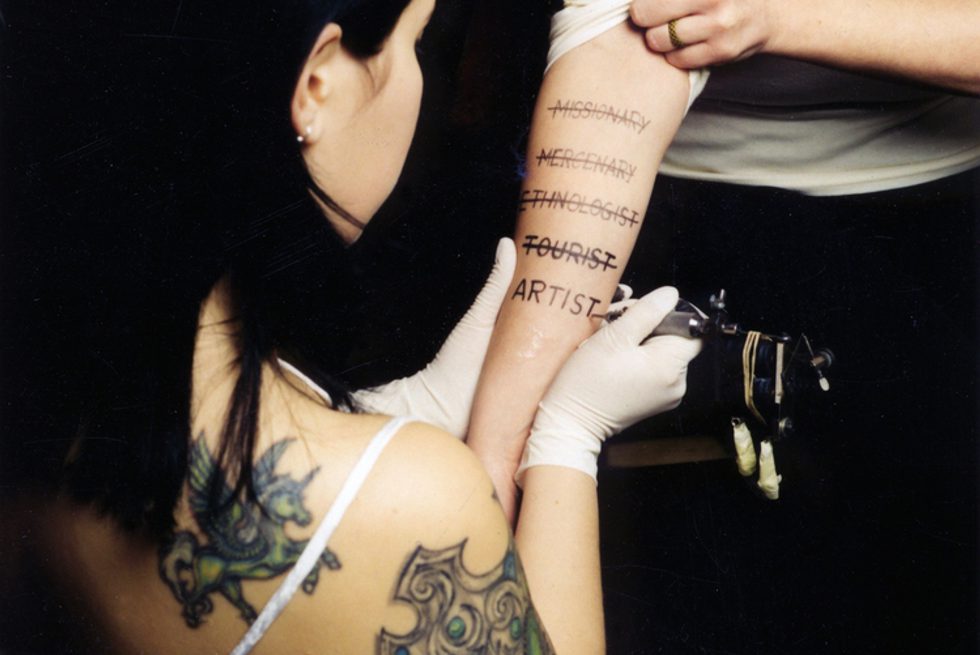
Once again, thanks for taking part in our Screening Room series. We hope you were able to enjoy the film! Phantom Foreign Vienna has been taken down, but this page will be up with background on the film, short biography and interview with the filmmaker, Lisl Ponger, a selection of Ponger's photographs, and suggestions for further reading.
“To depict a foreign world is always also to engender a fiction.”
From 29 January to 12 February 2014 we screened Lisl Ponger’s Phantom Foreign Vienna/Phantom Fremdes Wien (1991/2004). The film is a journey both through “foreign” Vienna in the early 1990s, and the artist’s process of filming and organizing audiovisual materials. Phantom Foreign Vienna is composed of vibrant Super 8 footage of New Year’s ceremonies, dance sequences, weddings, music performances, and religious gatherings that take place largely indoors. The film embraces multicultural Vienna while simultaneously gesturing to its discontents, including the politics of visibility and invisibility of migrant groups. Over a rich soundtrack, Ponger narrates the film with excerpts from her film diaries, personal observations on the circumstances of filming, and information from the film’s subjects that may (or may not) help contextualize the scenes. The film raises questions about depiction of the foreign or exotic, and how to configure seemingly documentary sound and images. Ponger’s continuous re-categorization of sequences, what she calls “multiple ambushes,” are provocative gestures for both artists and ethnographers. In the end, Ponger asks, “how to end? . . . with the exotic? Or a little exotic voyeurism?”
Purchasing information through Index DVD and Gartenberg Media (US and Canada).
Background on the film
The film Phantom Foreign Vienna emerged from a 1991–1993 still image and interview project for a weekly magazine called Falter in Vienna. This project Foreign Vienna/Fremdes Wien, was intended to generate “counter images” of migration and xenophobia in Austria. At the time, immigrants were paradoxically invisible, or only visible as a problem, and the project can be situated within art and activist movements that critiqued immigration laws and the treatment of refugees and asylum seekers (see Fotiadi 2012). The Foreign Vienna series led to a book and a number of exhibitions in Vienna, which were enthusiastically received. However, over the course of the 1990s, the one-sided focus of audiences on cultural performance seemed out of step with a right-leaning political landscape and increasingly restrictive migration policies. For Ponger, this aspect of Foreign Vienna and its reception became problematic. As she writes on her website:
What had become obvious was that the act of ‘making people visible’ was one with an embedded power structure - one party is able to make the other visible within a given system. While the action is motivated by goodwill, it does not effect an empowerment of the other party as an equal, but only on terms inherent in a system generally intent on maintaining the status quo. The configuration here is indicative of important issues of identity (national, ethnic, linguistic etc.) too, something which I will look at in another context.
However, I would argue that on a practical level, making something or someone visible is an activity which, although flawed, still has validity within a specific context, even if it is only temporary…
What is the position of the artist here? What is their function and how can they carry it out in a credible way? Is it simply a case that art, like many other social institutions, simply uses migration, migrants and asylum seekers as raw material for (aesthetic) speculation within the system itself? Can art production ever fundamentally question existing structures and power relationships and if so, under what conditions?
In the early 2000s, Ponger revisited her original Super 8 footage from the 1990s, and the result is Phantom Foreign Vienna. The film is like a restudy, spurred by shifts in her own intentions, as well as in the social, political, and artistic landscapes in which she works.
Biography
Lisl Ponger (1947–) is a visual artist based in Vienna who works in photography, film, and installation. Over her career she has engaged closely with politics and practices of anthropology. There is extensive discussion of her work in dialogue with artist Tim Sharp on the website ImagiNative, produced in conjunction with the Black Atlantic Project of the House of World Cultures, Berlin, 2004. ImagiNative explores visual cultures of anthropology and of tourism, particularly in relation to colonialism, racism, science, art, and nationalism. They reference a range of work, from eugenic science to vernacular travel films, from Leni Riefenstahl’s photographs of Nubians to Michel Leiris’s diary of the 1930s Dakar/Djibouti ethnographic mission.
Ponger has an exhibit at the Vienna Secession, “The Vanishing Middle Class" (13 February–30 March 2014), which examines the middle class in the genre of salvage ethnology. The exhibit is curated by Jeanette Pacher, and the catalog includes essays by James Clifford, Yvette Mutumba, and Tim Sharp. (Catalog ISBN: Secession: 978-3-902592-77-4; Revolver Verlag: 978-3-95763-008-7)
Ponger also has an upcoming exhibit with Tim Sharp at Charim Gallery, "Dreams of New Worlds" (5 March–26 April 2014).
Ponger’s films are distributed through sixpack film. Phantom Foreign Vienna is part of a DVD compilation Travelling Light, which includes two other short films, Passagen and Déjà Vu.
Interview with Lisl Ponger
Jenna Grant: First of all I want to thank you for letting us screen Phantom Foreign Vienna and for talking with me now. Could you talk a bit about the background of the project?
Lisl Ponger: They are actually two projects. The first one was called Foreign Vienna. It was conceived initially as a write-up in a weekly magazine called Falter. On the last page the series was printed, one black and white photo, which was actually a film frame, and an interview with one of the people that I had met during my travels through Vienna. I travelled on my own and I had a Super 8 camera, a tripod, a small tape recorder, and one thousand-watt floodlight with me. It was very similar to travelling as a tourist through the world; I went by public transport, which meant tramway and bus, but what was different was that I slept in my own bed every night and I could talk to most of the people in German. I only went—and that’s very important—on invitation to public events. Anybody could have gone there if they had known about it or wanted to. I always called the organizers in advance and said, “I’m so and so, I am with the magazine Falter, can I come and film?” and I got an invitation every time.
Then the project became a book with photos, interviews, and maps of the locations I went to. And everybody loved that project. It was 1991–1993, at the height of multiculturalism, a concept that seemed to have a chance for the future. Some people used to think multiculturalism meant going out to eat in Chinese restaurants or at your local Turkish kebab stand. So Foreign Vienna really hit. I did an incredible number of interviews on radio and TV after it was published. For the book presentation I rented a huge hall; it was, I think, 4,000 square meters. There were five stages with bands from the communities I visited playing simultaneously, the programme changing every hour, and many food stalls. Five thousand people came for the event. It was incredible.
JG: Wow. Who attended, other than the people who were performing?
LP: Well the communities, of course, and Viennese people. It was great. And it continued like that, everybody liking the project. Then the political situation changed, the self-understanding of the migrant groups changed, in fact everything had changed, but people still liked the singing and dancing. And then came a time when I thought, okay, well, that’s it. It isn’t right anymore. I don’t want to show the photographs anymore. Many different institutions had wanted to show it: the Catholic Church, the Protestant Church, art venues. And I decided, no more exhibitions, since I felt I should have been at every presentation talking about the problems involved, and of course one can’t do that.
JG: So what was the time frame of these exhibits, was it throughout the 90’s?
LP: I started travelling in 1991, the book was published in 1993, but I was still getting invitations in the year 2000. There is now a second book—the first book went out of print but the second one is still available. The texts are in English and German. It was published after I made the film, and is called Phantom Foreign Vienna as well. Instead of interviews it has notes from my travel diaries and a discussion about migration and art. The images are the same as in the first book.
JG: So this first era of the project involved still images, books, and performances, but the film wasn’t used until later, is that right?
LP: The film came later. I was asked again to exhibit Foreign Vienna for the opening of the Wien Museum. The new director wanted to show the photos once again and I said, “No.” Then I remembered that the basis for my photographs had been Super 8 film sequences. I used one frame from each event that I filmed. I had forgotten about all this film material, and asked the museum if they would be interested in co-producing a film. They were, and the result was Phantom Foreign Vienna. That was eleven years after my original project. So I had the chance—and that was really a great opportunity—to look back on what I had been doing then.
JG: What do the moving images do that the still Super 8 images do not?
LP: Well, the film gave me a totally different context, though it was never meant to be one. It was like finding my own found footage in my cupboard. I had forgotten about it. It gave me the possibility to critically assess what I had been doing in Foreign Vienna and to comment on it.
JG: For me the sound—the sound that you recorded, the sound that you cut in, and your voice over—is integral to the project. It’s interesting for me to think about one early stage of this as without sound.
You mentioned that there was a change in the political situation and the self-understanding of certain groups. Can you talk more about that?
LP: Well, when I started, like you wrote [in a draft of the write-up], migration wasn’t a general topic. Migrants were almost never talked about, and if so, only in a negative way, as part of a crime or as victims to be pitied. And I remember thinking, that can’t be all. What about people’s life here in Vienna... Immigration wasn’t a political topic when I started travelling. And then half a year later there was an election where Jörg Haider, the head of the right-wing party FPÖ, started to use immigration as an issue to exert political pressure on different parts of society. That was an international phenomenon, though. Ever since then it has been a topic in Austria. When I started my journey around the world in Vienna, I just wanted to find out what was going on in my town. I was unable to travel at the time, which is something I really like doing and where I get most of my ideas, so I decided to find out what was happening here. And then politics caught up with me.
JG: When you mention self-understanding, were you speaking about Viennese, or Austrian, or—
LP: No, self-understanding of migrant groups. A lot of the groups in the film were organizations: cultural, religious, sports clubs, and so on. Because there was suddenly more political pressure and negative focus on those groups, the self-understanding of the groups themselves changed. People had to leave the country. Some of my travel acquaintances were thrown out. There was a new fight for survival and acceptance of people with migratory background here in Vienna.
JG: I am interested in the project being simultaneously successful, in terms of being popular and well-received, and not so successful, in terms of being able to accommodate shifts in your intentions and in the social and political scene. You mentioned, in comments on an earlier draft of this write-up, that everyone could identify with the cultural displays of dancing and singing. This is a classic dilemma, I think, for a lot of anthropology. The cultural displays, or even exotic displays, may draw people in, to engage with an “other,” but they may obscure questions about exclusion or limited opportunity, or problems of power.
LP: Well, I guess my intentions were exactly right at the time I started. I was interested in finding out what was going on in my hometown. I myself was drawn in by all this dancing and singing, by the exoticism and different energy I encountered in the celebrations and religious festivals I went to. That I had to question later, of course. The political situation changes and you’re still in this frame of mind? Well, I wasn’t. I am also a cultural activist; I take part in political activism concerning migration and racism. And I had the feeling the people [depicted in the film] had moved on, I had moved on, but some of the audience hadn’t.
JG: I see. Has the response to the film been any different? It’s a different audience, I imagine.
LP: Well . . . that’s an interesting question. The film was partly funded by the Ministry of Culture, and I had some problems with it. I was told leaving out my commentary would make it a better film.
JG: Oh . . . meaning, the narration?
LP: The singing and dancing was okay, but please could I leave out my voice over. In the end, some people liked the film and I got the funding. It was part of a discourse going on at the time. In the arts it was also the time when a lot of work on migration was being produced and shown, and I was asked, “How come the people in the film don’t speak for themselves?” and criticized for the lack of it. I was falling between two stools for a time. It took a while to catch on, as with some of my other work.
JG: Has it been screened in ethnological museums, where there is an ongoing struggle to figure out how to represent—
LP: A lot of my work has been shown in ethnological museums, but mainly my photographs. After Fremdes Wien/Foreign Vienna there was a follow up exhibition and book called Xenographic Views (1996). This has been being shown in many different ethnological museums.
JG: One of the things that is interesting to me is the introduction of the word “phantom” into the film, which wasn’t with the photos. Can you talk a bit about that, what that word is doing?
LP: It references Leiris’ Phantom Africa, as well as a question for myself: “What is Foreign Vienna? And where would that be located?” It’s really a commentary on what I have been doing.
JG: To me, the term “phantom” in the title points to the foreign as an elusive object: there is not one way to represent "foreign," and representations of "foreign" are never only of an other, but of a relation to a self as well. One of the struggles with a sort of relativism in anthropology, at least as I see it, is a question about “a different perspective.” For example, in the film, there are different ways to categorize the images, different ways to arrange them. I love the phrase that these moves are “multiple ambushes” on a stable or singular interpretation. It’s great. It’s something that I’ve found productive in the classes where I screened it for bringing up conversations about perspective as well as problems with perspectival approaches. For example, are these just different points of view—whether they’re scientific points of view or artistic points of view, or subjective, diaristic points of view—on the same thing? Or is the “thing” itself made differently by these different orderings, through geography, chronology, or film language, for example? Is the question then of one singular form and a right or wrong way to represent it? Were any of the discussions, with yourself or your colleagues, about these issues?
LP: Well, the discourse in the film scene here can be very strange at times. I could only have the discussions you mentioned with people who knew anything about anthropology, which not too many experimental filmmakers here do. The discourse in certain parts of the art scene is probably much more “there” than in the film scene. I think the discourse in the film scene on topics like representation and the representational traps you can fall into is far behind the one in the arts.
JG: The film is engaging because it is a mix of different elements: it’s critical and serious, and also playful—I don’t know if playful is the right word. It's beautiful, and a little boring.
LP: I was also trying to comment on categorizing, on “the Western white notion of naming and claiming,” on editing film by treating people as material only, and so on. I find Phantom Foreign Vienna a funny film in a way. And sometimes, just sometimes, people laugh. But normally they don’t. Then, of course, only people that are part of this discourse get an idea of what I was trying to do.
JG: I haven’t obviously seen the show that’s coming at the Secession, but I wonder if some of these issues are in play? The new exhibition at the Secession is titled “The Vanishing Middle Class,” right? I am interested in the exhibit, but also specifically in what you were just saying about this discourse of questioning the artist, or ethnographer, or just the positionality. Does the exhibit speak to that?
LP: The show is conceived as that. I have an ethnological museum there showing an exhibition that looks at my own class, at myself. That’s what it’s all about. I am part of the middle class, of course, as an artist. Really what I’m doing is talking about now by looking at the middle class through salvage ethnology, referring back to the “Vanishing Indians” and trying to comment on some of the changes ethnological museums are going through, like changing their names and their image and so on. In the show I’m talking about the bank crises, tax havens, and the emerging middle class in China. My ethnological museum is called “Museum for Foreign and Familiar Cultures,” MuKul in short. I followed certain conventions of ethnological display, from inventory numbers and wall texts to dioramas and plaster casts of "vanishing" people. It is wonderful to have the chance to realize a project that I’ve long wanted to do.
JG: It reminds me of something Sylvia Walby said in a lecture I attended last year here in Amsterdam, that techniques of managing the crisis in Europe are structural adjustment programs coming “home.”
LP: . . . Europe is taking note because it is about “us” finally, right?
JG: Before I forget, you had mentioned that James Clifford wrote a piece for your exhibit.
LP: It’s an essay with photographs he made in China, called “And Now?”
JG: It seems like you’ve been in dialogue with his work for a long time.
LP: Yes, I have. Routes has influenced my work a lot and I am just about to start reading his latest book, Returns.
JG: That’s great. I look forward to the press text and hopefully seeing the exhibition.
LP: It’s a great coincidence that this screening of Phantom Foreign Vienna with Cultural Anthropology and the Secession show are happening at the same time.
JG: I know! Thanks so much, Lisl.
LP: Thanks to you. Bye.
Photographs by Lisl Ponger
(All photos courtesy of Charim Galerie, Vienna.)

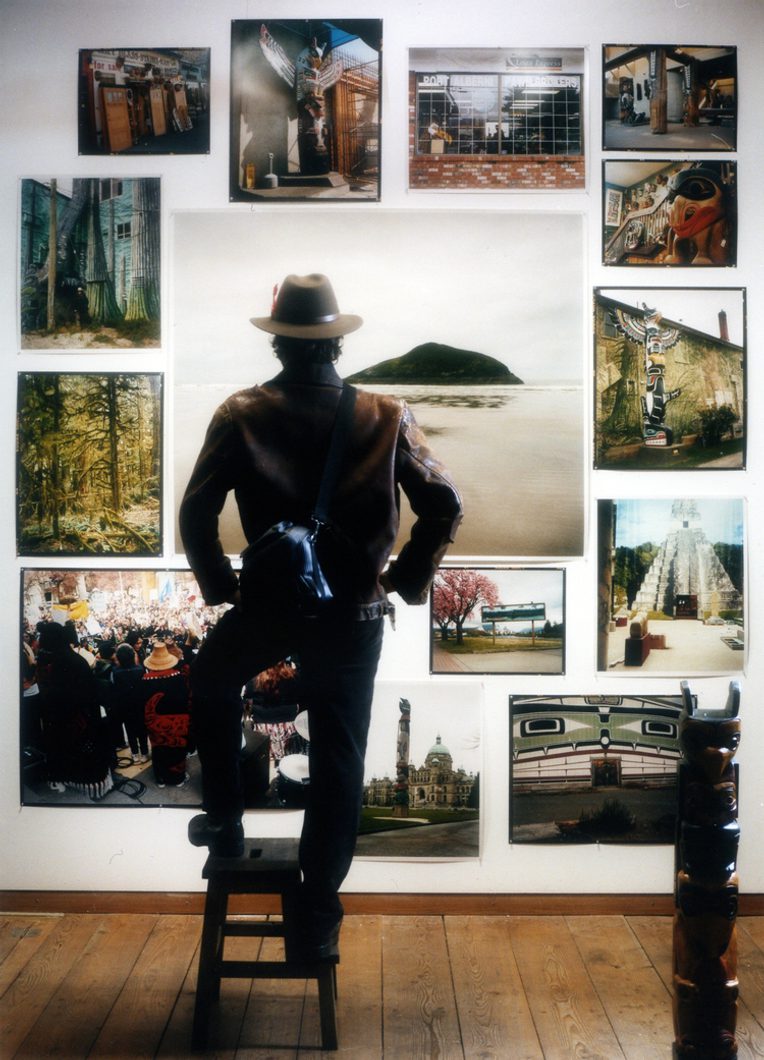
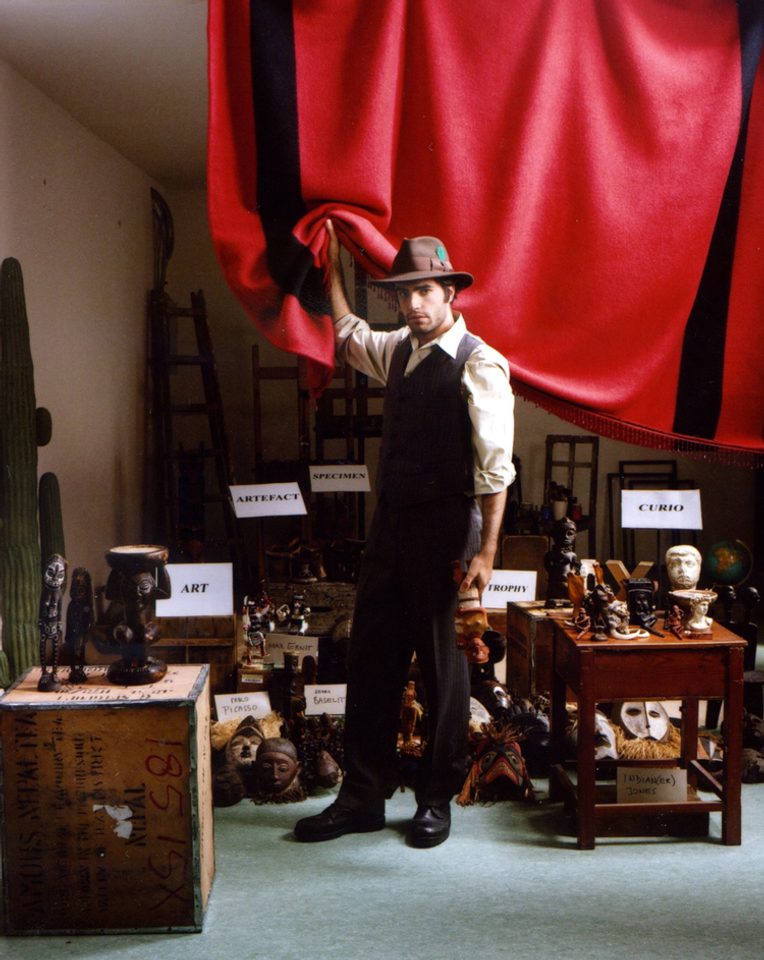
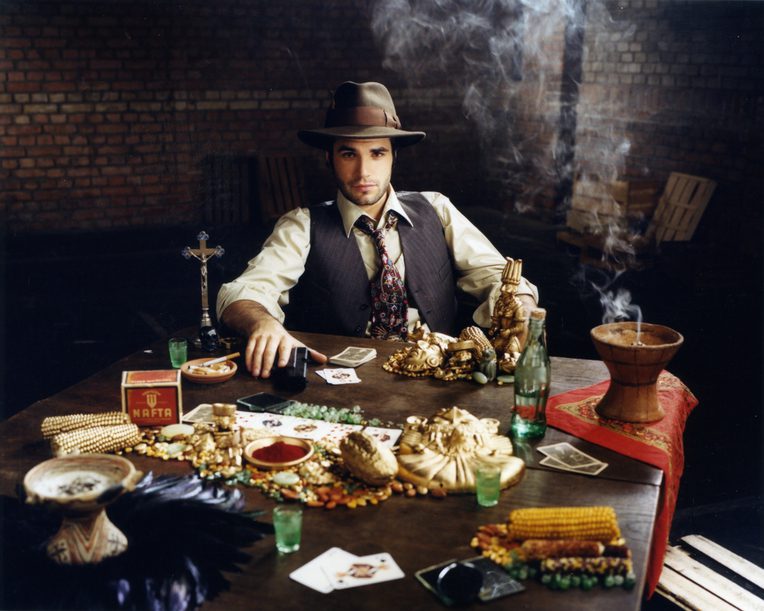
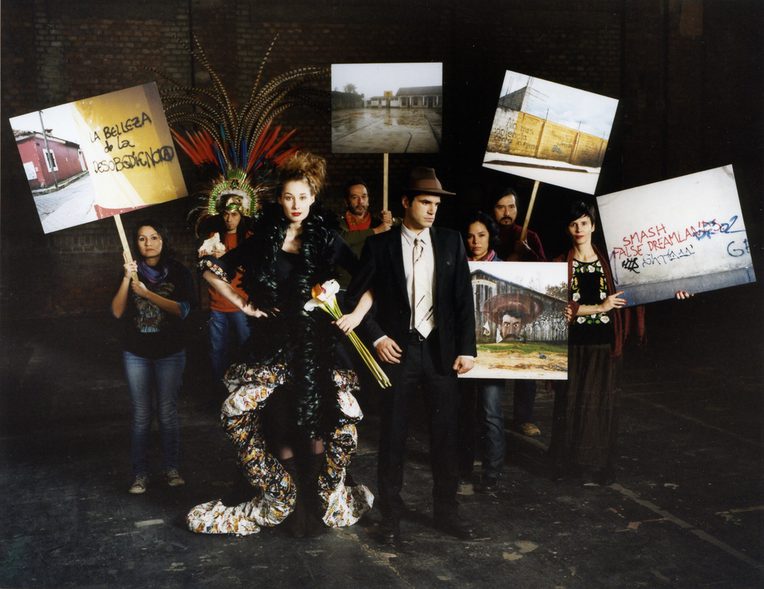
References
Beaujour, Michel. 1987. Michel Leiris: Ethnography or Self‐Portrayal? Review Essay of Sulfur 15, featuring new translations of Michel Leiris's work. Cultural Anthropology 2, no. 4: 470-480.
Blanchard, Marc. 1990. Visions of the Archipelago: Michel Leiris, Autobiography and Ethnographic Memory. Cultural Anthropology 5, no. 3: 270-291.
Brown, Jacqueline Nassy. 1998. Black Liverpool, Black America, and the Gendering of Diasporic Space. Cultural Anthropology 13, no. 3: 291-325.
Bunzl, Matti. 2008. Outing as Performance / Outing as Resistance: A Queer Reading of Austrian (Homo)Sexualities. Cultural Anthropology 12, no. 1: 129-151.
Clifford, James. 1994. Diasporas. Cultural Anthropology 9, no. 3: 302-338.
Clifford, James. 1997. Routes: Travel and Translation in the Late Twentieth Century. Cambridge, Mass.: Harvard University Press.
Edwards, Elizabeth. 1992. Anthropology and Photography, 1860–1920. New Haven, Con.: Yale University Press.
Ewing, Katherine. 2006. Between Cinema and Social Work: Diasporic Turkish Women and the (Dis)Pleasures of Hybridity. Cultural Anthropology 21, no. 3: 265-294.
Fassin, Didier. 2005. Compassion and Repression: The Moral Economy of Immigration Policies in France. Cultural Anthropology 20, no. 3: 362-387.
Fotiadi, Eva. 2012. “Doing Language: Narratives from an Activists’ World in the Austrian Art World of the 1990s.” RIHA Journal 0062, 10 December.
Galt, Rosalind. 2011. Pretty: Film and the Decorative Image. New York: Columbia University Press.
Höller, Christian. 2003. Phantom Foreign Vienna / Phantom Fremdes Wien. Vienna: Sixpack Film.
Jacknis, Ira. 1988. Margaret Mead and Gregory Bateson in Bali: Their Use of Photography and Film. Cultural Anthropology 3, no. 2: 160-177.
Krause, Elizabeth L. 2001. "Empty Cradles" and the Quiet Revolution: Demographic Discourse and Cultural Struggles of Gender, Race, and Class in Italy. Cultural Anthropology 16, no. 4: 576-611.
Leiris, Michel. 1934. L’Afrique fantôme. De Dakar à Djibouti 1931–33. Paris: Gallimard.
Lutkehaus, Nancy Christine. 1989. "Excuse Me, Everything is Not All Right": On Ethnography, Film, and Representation. Cultural Anthropology 4, no. 4: 422-437.
Memmi, Albert. 2000. Racism. Translated by Steve Martinot. Minneapolis: University of Minnesota Press.
Partridge, Damani. 2008. We Were Dancing in the Club, Not on the Berlin Wall: Black Bodies, Street Bureaucrats, and Exclusionary Incorporation into the New Europe. Cultural Anthropology 23, no. 4: 660-687.
Phillips, Ruth B., and Steiner, Christopher B. 1999. Unpacking Culture: Art and Commodity in Colonial and Postcolonial Worlds. Berkeley: University of California Press.
Riefenstahl, Leni. 1973. Die Nuba: Menschen wie von einem anderen Stern. Munich: Verlag.
Rony, Fatimah Tobing. 1996. The Third Eye: Race, Cinema, and Ethnographic Spectacle. Durham, N.C.: Duke University Press.
Rosenbaum, Jonathan. 2012. “Lisl Ponger’s Cinema: The Lessons of Ignorance.” In Film Unframed: A History of Austrian Avant-Garde Cinema, edited by Peter Tscherkassky. Vienna: Austrian Film Museum. [also available online]
Said, Edward. 1979. Orientalism. New York: Vintage.
Sundholm, John. 2010. Review of DVD releases of Kurt Kren's Structural Films (2004); Valie Export's 3 Experimental Shorts (2004); Dietmar Brehm's Black Garden (2006); and Lisl Ponger's Tavelling Light (2004). Film International 8(4):73-77.
Taussig, Michael. 1993. Mimesis and Alterity: A Particular History of the Senses. New York: Routledge.
Taussig, Michael. 2009. What Color is the Sacred? Chicago: University of Chicago Press.
Thomas, Nicholas. 1991. Against Ethnography. Cultural Anthropology 6, no. 3: 206-322.
Grimshaw, Anna. 2011.The Bellwether Ewe: Recent Developments in Ethnographic Filmmaking and the Aesthetics of Anthropological Inquiry. Cultural Anthropology 26, no. 2: 247-262.
Narayan, Kirin. 1993. Refractions of the Field at Home: American Representations of Hindu Holy Men in the 19th and 20th Centuries. Cultural Anthropology
8, no. 4: 476-509.
Dominy, Michèle. 1993. Photojournalism, Anthropology, and Ethnographic Authority. Cultural Anthropology 8, no. 3: 317-337.
Trinh, T. Minh-ha, dir. 1982. Reassemblage. 40 minutes. 16mm/DVD. Women Make Movies. New York.
Trinh, T. Minh-ha. 1985. Naked Spaces, Living is Round. 135 minutes. 16mm/DVD. Women Make Movies. New York.